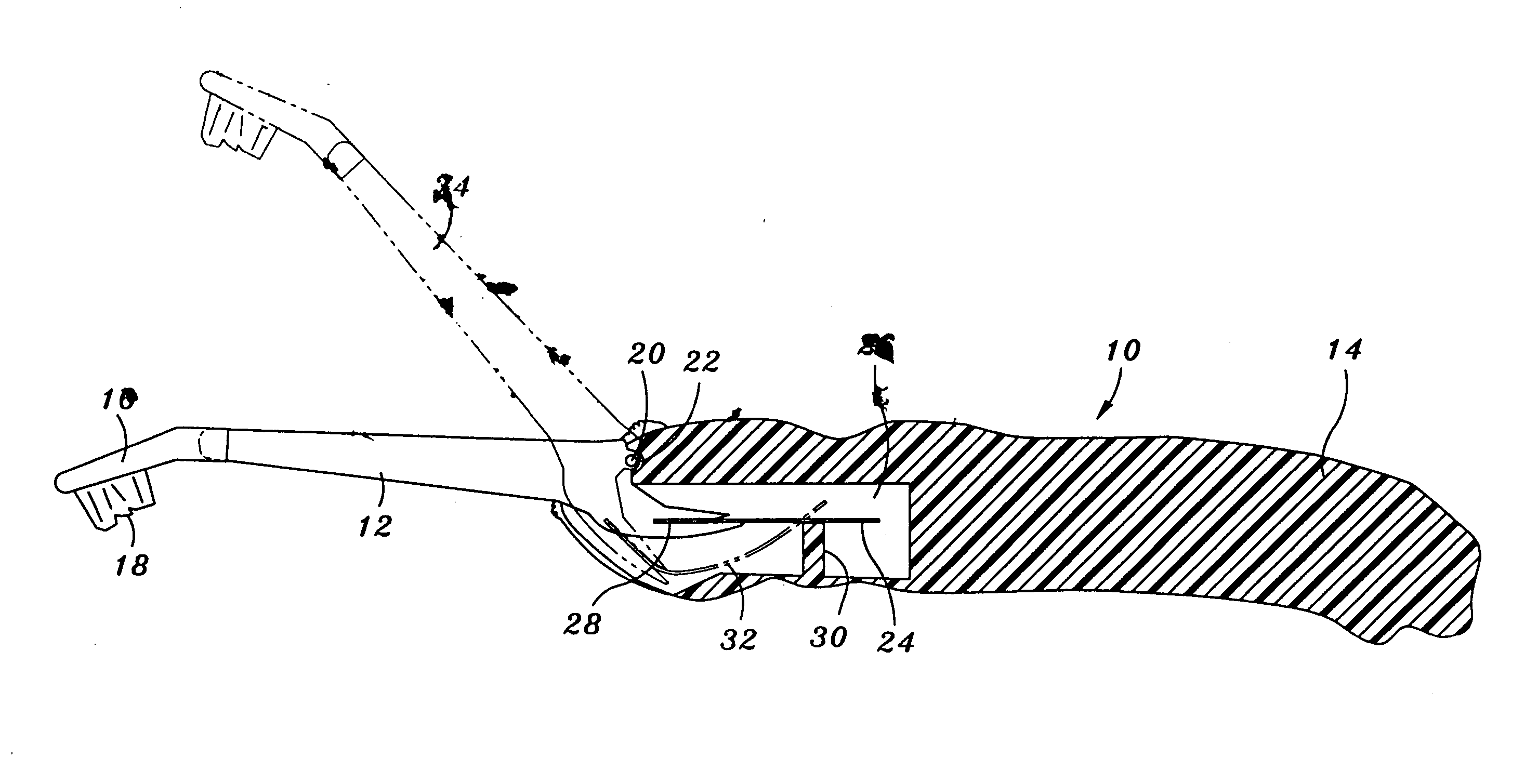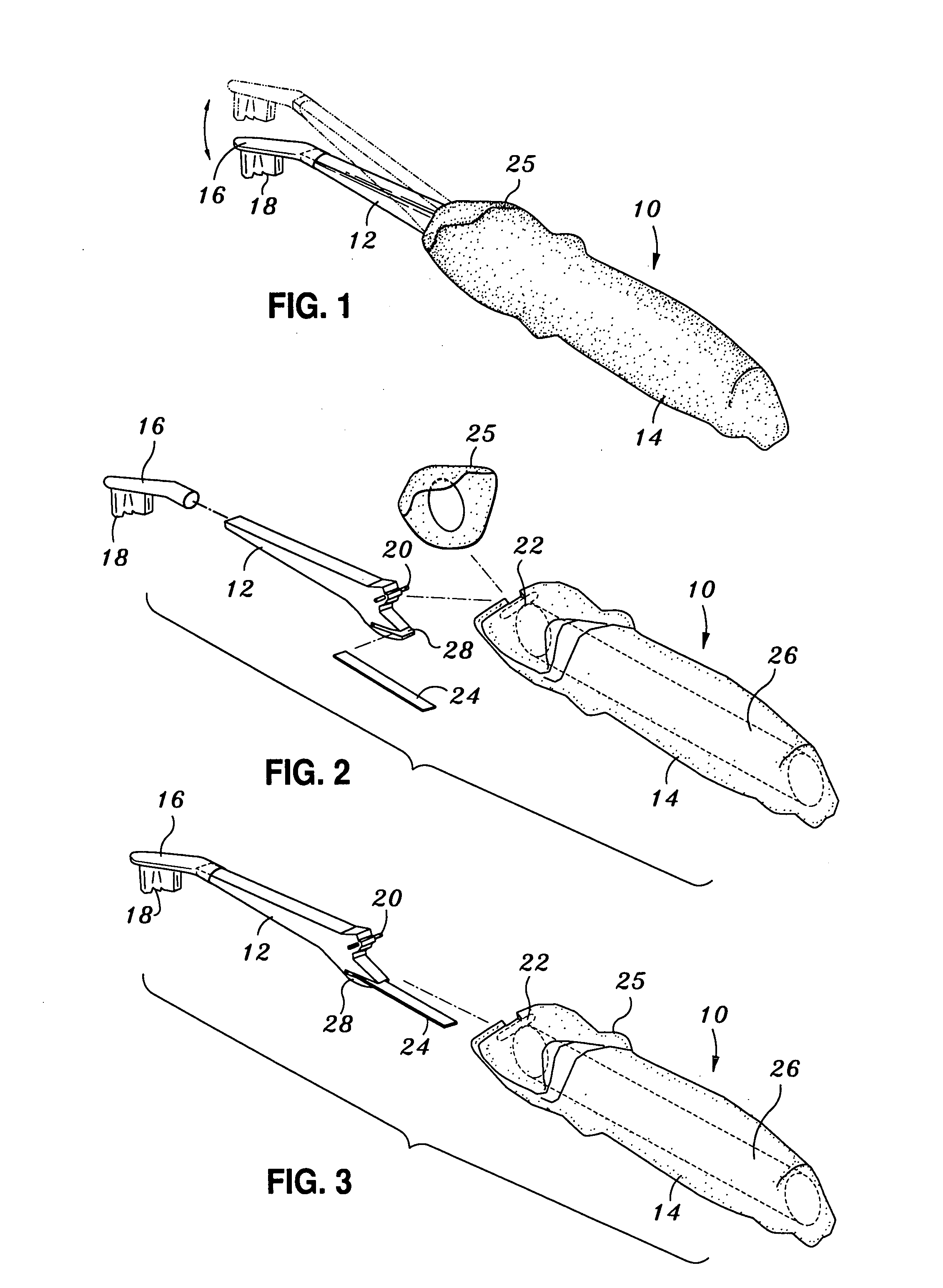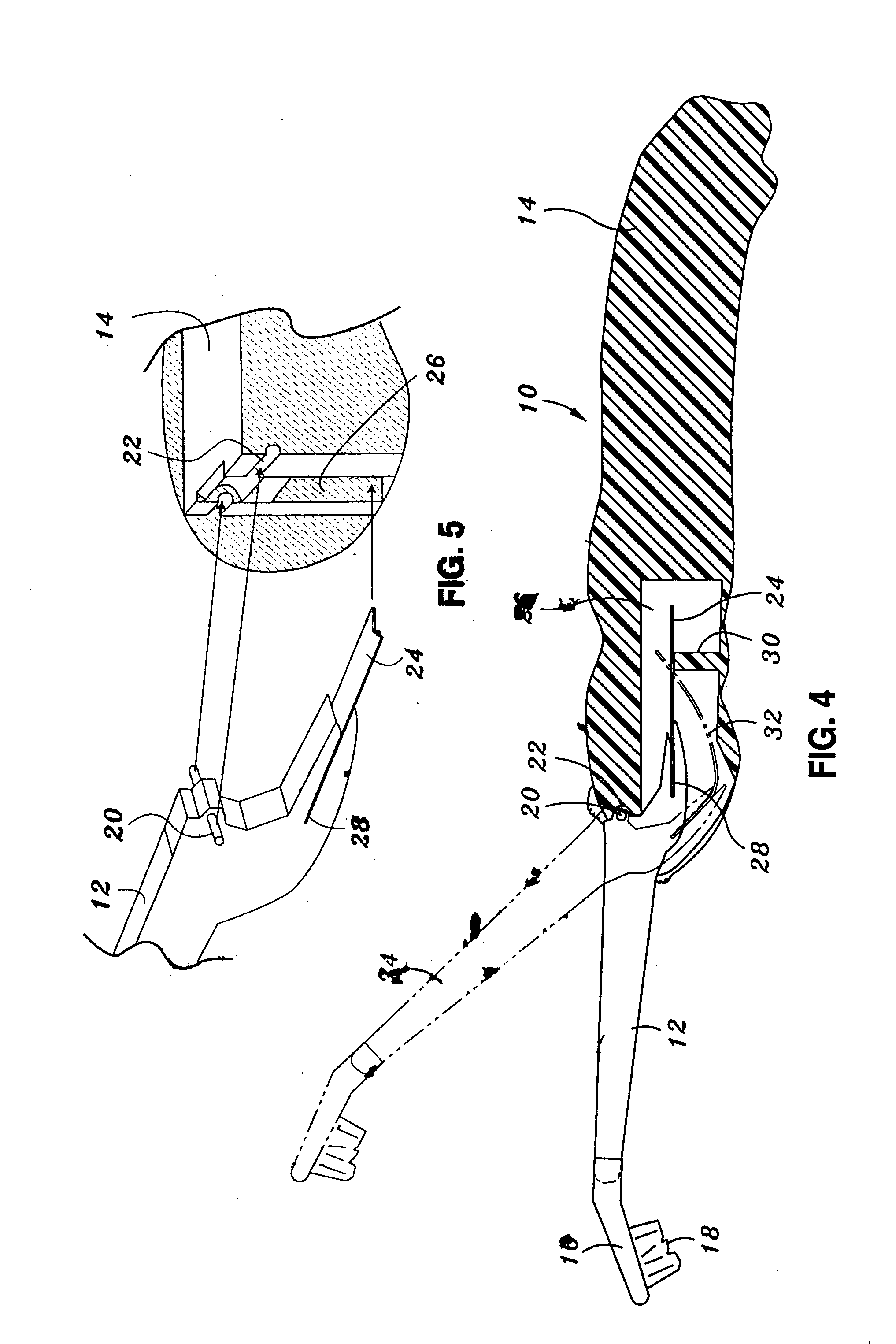Flexible neck toothbrush
a flexible, toothbrush technology, applied in the field of dental hygiene products, can solve the problems of affecting the use of teeth, and affecting the use of soft oral tissues, so as to prevent tooth abrasion and gum damage during us
- Summary
- Abstract
- Description
- Claims
- Application Information
AI Technical Summary
Benefits of technology
Problems solved by technology
Method used
Image
Examples
first embodiment
[0039] Referring to the drawings, wherein like reference numerals refer to the same or similar elements among FIGS. 1 through 5, there is shown a toothbrush 10 in accordance with the present invention. Toothbrush 10 contains a neck member 12 and a handle member 14. Toothbrush 10 additionally includes a head section 16 having brush bristles 18. The head 16 is connected to the neck member 12 by a frictional fit as best illustrated in FIG. 4 wherein the neck member 12 is inserted within an aperture (not shown) of the head member 16. The head member 16 may be secured by an inert epoxy or otherwise fixed to the neck member 12. It is contemplated in this embodiment, as well as all embodiments as set forth herein, that the connection between the neck member 12 and the head member 16 may additionally include an elastomer coupler. The elastomer coupler may be provided as a movable joint that provides additional flexibility in the head member 16 relative to the neck member 12.
[0040] The handl...
second embodiment
[0048] A leaf spring 50 is embedded into the proximal end of the neck member 38. The leaf spring 50 is inserted into the handle cavity 54 when the pivot bar 46 engages the pivot slot 48. The leaf spring 50 engages the interior surface of the cavity 52 to provide a biasing force when pressure is applied to the toothbrush head 42. Protective sheath 51 envelops the junction between the distal end of the handle member 40 and the proximal end of the neck member 38. Leaf spring 50 for purposes of this second embodiment, as well as each embodiment described herein is comprised of a high-grade plastic having appropriate spring-like characteristics. In this regard, it may be formed in each of the embodiments from a fiber-reinforced plastic, wherein such fibers may be made of glass or carbon fibers. The leaf spring 50 can be separately injected molded and then inserted or injection mold integrated into the neck member 38. It is additionally contemplated by all embodiments of the present inven...
third embodiment
[0054] A leaf spring 88 is embedded into the distal end of the handle member 78. The leaf spring 88 engages the proximal end of the neck member 76 when the pivot bar 84 engages the pivot slot 86. The leaf spring 88 engages the surface the proximal end of he neck member 76 to provide a biasing force when pressure is applied to the toothbrush head 80. Protective sheath 89 envelops the junction between the distal end of the handle member 78 and the proximal end of the neck member 76. Leaf spring 88 for purposes of this third embodiment, as well as each embodiment described herein is comprised of a high-grade plastic having appropriate spring-like characteristics. In this regard, it may be formed in each of the embodiments from a fiber-reinforced plastic, wherein such fibers may be made of glass or carbon fibers. The leaf spring 88 can be separately injected molded and then inserted or injection mold integrated into the handle member 78. It is additionally contemplated by all embodiment...
PUM
 Login to View More
Login to View More Abstract
Description
Claims
Application Information
 Login to View More
Login to View More - R&D
- Intellectual Property
- Life Sciences
- Materials
- Tech Scout
- Unparalleled Data Quality
- Higher Quality Content
- 60% Fewer Hallucinations
Browse by: Latest US Patents, China's latest patents, Technical Efficacy Thesaurus, Application Domain, Technology Topic, Popular Technical Reports.
© 2025 PatSnap. All rights reserved.Legal|Privacy policy|Modern Slavery Act Transparency Statement|Sitemap|About US| Contact US: help@patsnap.com



